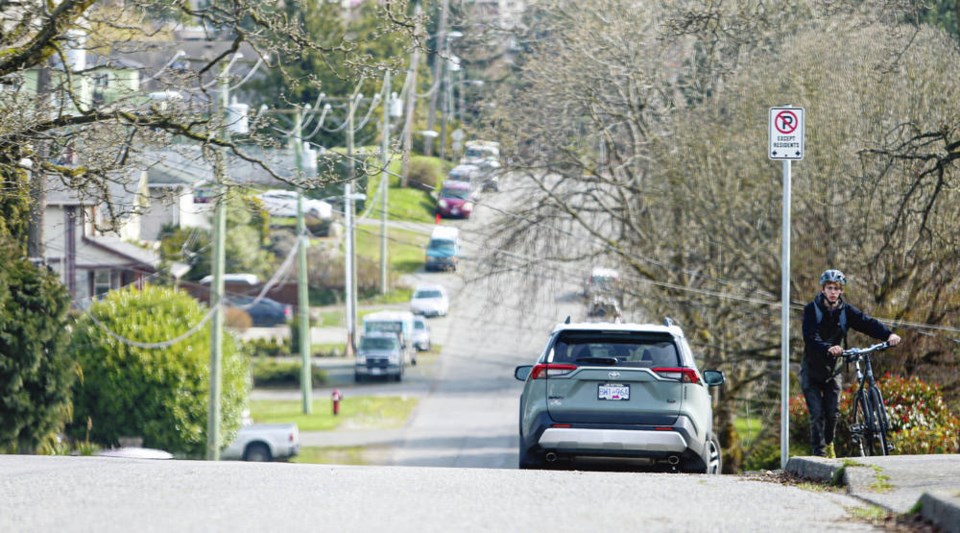Saanich council has voted unanimously in favour of limiting speeds on its residential streets to 30 km/h and is hoping other municipalities will buy into a regional pitch to the province for a pilot project.
Mayor Fred Haynes plans to write to other mayors in the region to promote a joint application to the province for permission to implement the 30 km/h limit on streets without continuous yellow centre lines. The speed limit on those streets is now 50 km/h.
The goal is to establish similar side-street speed limits throughout the region in a three-year-pilot program.
Provincial approval is required to implement the change, which is aimed at improving safety for those walking and cycling.
Saanich and five other municipalities had backed a plan in the fall for a 40 km/h speed limit on side streets. But councillors Zac de Vries, Rebecca Mersereau and Ned Taylor convinced the rest of council to seek a limit of 30 km/h instead.
De Vries told council on Monday that although not all area municipalities supported the 40 km/h proposal, this is a good opportunity to have consistent speed limits in parts of the region.
Saanich, for example, has more than 20 roads without centre lines at its boundary with Victoria, he said.
De Vries said reduced vehicle speeds make it easier for residents to walk, cycle and use mobility devices on residential streets.
He said people should be able to feel safe moving around their neighbourhoods.
Supporters of reduced speed limits cite the fact that chances of pedestrians being killed when struck by a vehicle rise sharply when speeds exceed 30 km/h.
The pilot project would also discourage drivers from using neighbourhood streets as cut-through routes.
Dean Murdock, a member of Better Mobility Saanich and advocate of the 30 km/h limit, said Tuesday the unanimous vote sends a strong signal of support from Saanich.
“It’s a big step forward for road safety for non-motorized road users,” said Murdock.
“These neighbourhood roads belong to the residents — to the people who like to get out and enjoy them and walk their dogs and get on their bikes with the kids and visit with their neighbours.”
Many Saanich side streets don’t have sidewalks, making it more difficult for pedestrians to avoid vehicles, he said.
Coun. Colin Plant said he didn’t initially support the idea of a 30 km/h speed limit, but changed his mind after seeing more than 400 emails in favour of the plan.
If the province rejects the 30 km/h proposal, Saanich can consider reviving the 40 km/h concept, Plant said.
Central Saanich, Oak Bay, North Saanich, Sidney and Esquimalt had joined Saanich in the 40 km/h proposal, while Victoria was in favour of 30 km/h limits.
“All our indications before was that what we had together for the 40 was going to stand a high chance [of provincial approval], but I think pulling together, we can increase the chance for the 30,” Haynes said.
Central Saanich Mayor Ryan Windsor and Esquimalt Mayor Barb Desjardins both said Tuesday they could not predict how their councils will respond to the proposed 30 km/h speed limit.
Windsor said earlier feedback from residents ran more strongly in favour of a 40 km/h limit than 30 km/h.
View Royal Mayor David Screech said his council might now be open to joining the coalition in favour of the 30 km/h maximum because many of that municipality’s smaller roads already have that limit.



